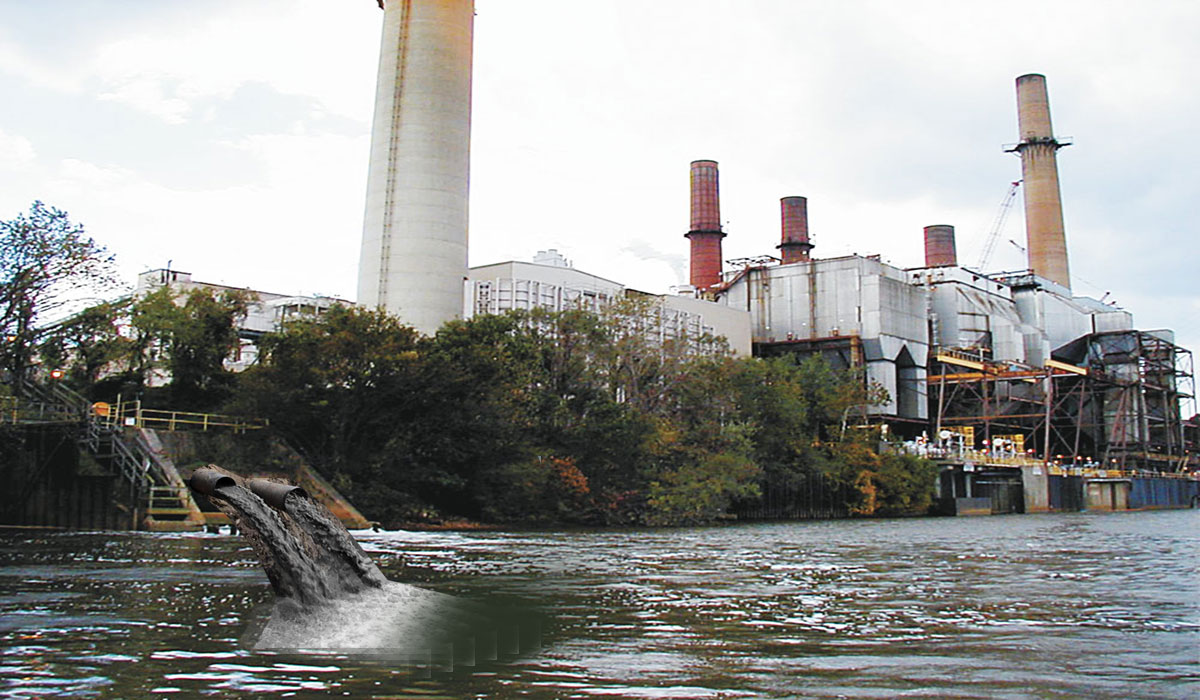Key Methods in Industrial Waste Water Treatment Processes
The treatment of industrial wastewater is an essential facet of ecological management, including an array of methods developed to reduce the effect of contaminants. Innovations in technologies such as membrane layer filtration and progressed oxidation processes use cutting-edge options for boosting therapy efficiency.
Physical Treatment Approaches
Just how effectively can physical therapy techniques attend to the intricacies of industrial wastewater? Physical treatment approaches play an essential function in the preliminary phases of wastewater monitoring, concentrating primarily on the elimination of solids and huge particulates. Techniques such as purification, flotation protection, and sedimentation are vital for decreasing the concentration of put on hold solids, thereby boosting the efficiency of succeeding therapy processes.
Sedimentation involves the gravitational settling of solids, allowing for the separation of much heavier products from the wastewater. This approach is particularly reliable in clarifying water prior to chemical or biological treatments. Filtration, on the various other hand, utilizes numerous media to capture particle issue, making certain that smaller impurities are eliminated. This technique can be tailored to accommodate different sorts of commercial effluents, generating clearer effluent streams.
Additionally, flotation approaches, which make use of air bubbles to lift put on hold solids to the surface for elimination, work in dealing with wastewater with high focus of fats, oils, and greases. Overall, physical treatment approaches offer as a critical primary step in the extensive administration of commercial wastewater, guaranteeing that the tons on succeeding therapy phases is lessened and improving general treatment efficacy.
Chemical Treatment Techniques
While physical therapy methods prepared for reliable wastewater management, chemical treatment strategies are crucial for resolving the much more complex impurities frequently discovered in commercial effluents. These techniques utilize different chemical representatives to precipitate, neutralize, or oxidize harmful materials, guaranteeing a much more comprehensive elimination of toxins.
One usual method is coagulation and flocculation, where chemical coagulants such as aluminum sulfate or ferric chloride are included in advertise the gathering of put on hold particles. This procedure enhances solid-liquid separation, lowering turbidity and enhancing water quality. Furthermore, neutralization procedures are utilized to readjust the pH of wastewater, making use of acids or bases to reduce the effects of acidic or alkaline streams, specifically.
Oxidation-reduction reactions play a vital duty in degrading organic pollutants and virus. Chemical oxidants like chlorine, hydrogen, or ozone peroxide are made use of to damage down complex natural compounds, making them much less dangerous or more eco-friendly. Moreover, advanced oxidation processes (AOPs) integrate several oxidation methods to boost contaminant removal performance.
Organic Treatment Processes
The effectiveness of wastewater treatment is considerably enhanced by organic therapy processes, which harness the all-natural metabolic tasks of bacteria to disintegrate natural matter and eliminate pollutants. Industrial Waste Water Treatment. These procedures primarily entail cardio and anaerobic digestion, each tailored for details kinds of wastewater
Cardiovascular treatment processes utilize oxygen to support microbial development, promoting the failure his explanation of natural pollutants right into co2 and water. Common approaches include activated sludge systems, where aeration tanks facilitate the mixing of wastewater with microorganisms, and flowing filters, which encourage biofilm growth on media surface areas.
On the other hand, anaerobic treatment procedures happen in the absence of oxygen, utilizing anaerobic bacteria to decay raw material, causing biogas manufacturing, a renewable resource resource. Anaerobic digesters are usually employed in industrial settings for this purpose, effectively decreasing the volume of sludge while generating useful biogas.
The choice of a biological therapy method depends on wastewater attributes, therapy objectives, and regulatory criteria. The integration of biological procedures in wastewater treatment not just improves contaminant elimination efficiency yet likewise promotes sustainability by minimizing chemical use and supporting resource healing.
Advanced Oxidation Processes

Typical AOP methods consist of Fenton's photocatalysis, ozonation, and reagent. Fenton's reagent, a mix of hydrogen peroxide and ferrous iron, catalyzes the formation of hydroxyl radicals, making it efficient for dealing with wastewater including phenolic substances and various other recalcitrant compounds.
AOPs use numerous advantages, consisting of lowered sludge production and the capability to treat wastewater with high focus of organic toxins. The implementation of AOPs calls for careful factor to consider of functional parameters and cost-effectiveness, guaranteeing that these advanced techniques are appropriately integrated right into existing wastewater treatment systems.
Membrane Filtration Technologies

Microfiltration is effective for getting rid of suspended solids and germs, while ultrafiltration targets smaller sized natural molecules and infections. Nanofiltration bridges the space in between ultrafiltration and turn around osmosis, efficiently eliminating organic compounds and divalent ions. Reverse osmosis supplies the greatest degree of purification, made use of largely for desalination and getting rid of mono-valent ions.
Membrane layer innovations use many advantages, including reduced energy intake contrasted to typical treatment techniques, modular design for scalability, and the possibility for water recuperation additional info and reuse. Obstacles such as membrane fouling and the demand for routine upkeep have to be dealt with to ensure system effectiveness. Generally, membrane layer filtering innovations represent an important element of contemporary industrial wastewater treatment strategies, advertising sustainability and resource preservation in water monitoring.
Verdict
In conclusion, industrial wastewater therapy utilizes a varied range of methods, consisting of physical, chemical, biological, and advanced techniques. Proceeded advancements in these methods will additionally boost the effectiveness and performance of wastewater therapy procedures in commercial setups.
The treatment of industrial wastewater is an essential element of environmental management, entailing a range of techniques made to mitigate the influence of contaminants.Just how efficiently can physical therapy techniques resolve the complexities of industrial wastewater?Advanced oxidation procedures (AOPs) stand for an innovative approach in commercial wastewater treatment, made to efficiently degrade natural toxins that are frequently resistant to conventional treatment methods (Industrial Waste Water Treatment).In final thought, industrial wastewater treatment employs a varied range of techniques, including physical, chemical, organic, and progressed approaches. Continued improvements in these methods will certainly even more improve the efficiency and efficiency of wastewater treatment processes in industrial settings